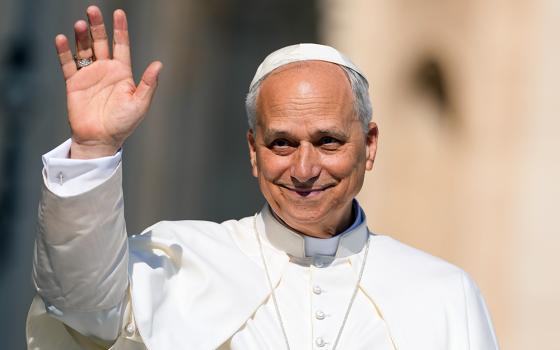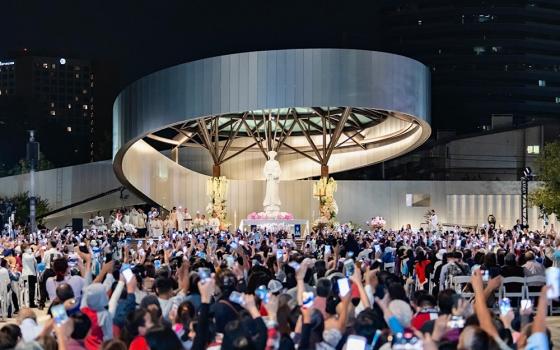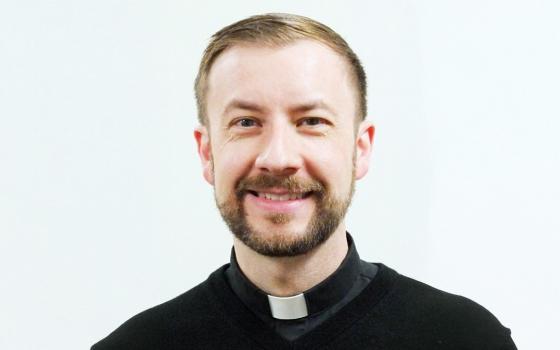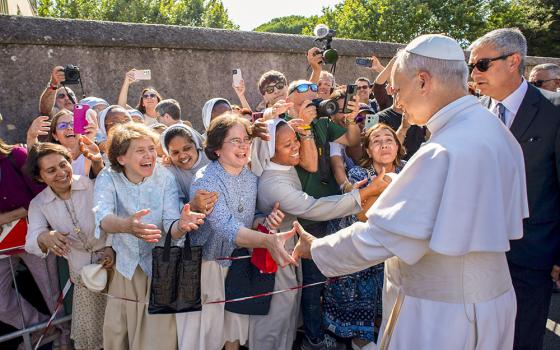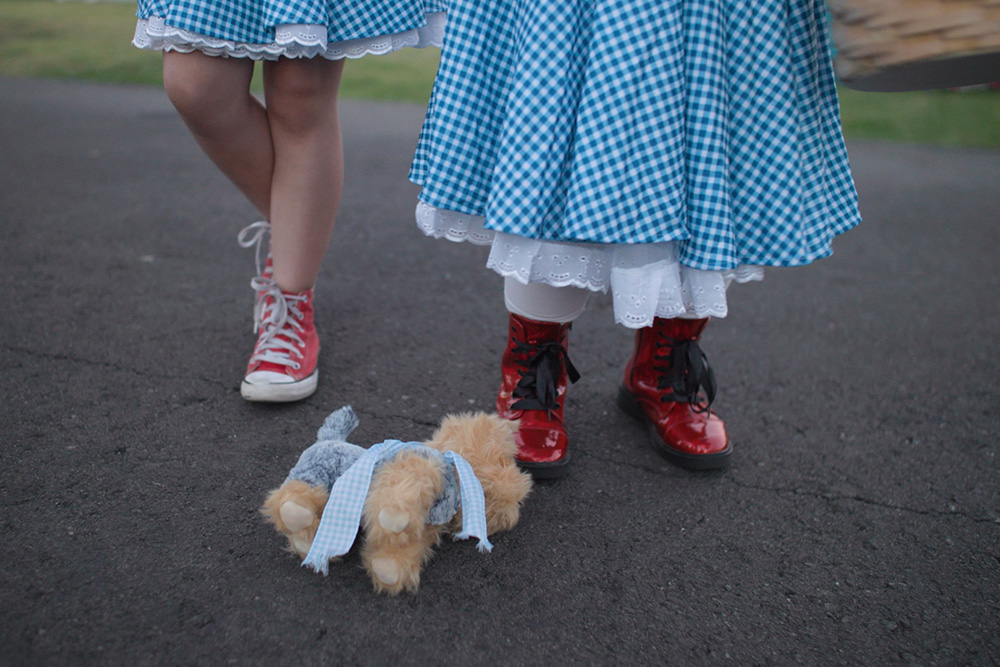
In the new documentary "It’s Dorothy!," which debuted at the Tribeca Film Festival this month, writer/director Jeffrey McHale explores why Garland's Dorothy in "The Wizard of Oz" propelled the actor to icon status within the LGBTQ+ community. (Frameline49)
Whether by coincidence or some gesture of queer providence, Pride Month includes both the birthday and the date of death of LGBTQ+ icon Judy Garland.
Garland's wake and funeral, on June 27, 1969, on the Upper East Side of New York City, drew an estimated 20,000 people to her glass casket. That night, New York City police conducted a raid on the Stonewall Inn with the intent of arresting anyone whose dress did not conform to their birth gender. When the Stonewall riots began, the community's grief over Garland's passing was arguably a motivating factor.
In the new documentary "It's Dorothy!," which debuted at the Tribeca Film Festival this month, writer/director Jeffrey McHale explores why Garland's Dorothy in the 1939 movie "The Wizard of Oz" propelled the actor to icon status within the LGBTQ+ community. Where some have viewed the association as strictly camp, McHale finds instead an identification born of shared longing, suffering and courage.
While it's hard to believe today, many Americans initially reacted adversely to the casting of Garland as Dorothy, insisting that at 15 she was too old for the part, and too overexuberant to boot. But Garland's early roles in Hollywood were often girls like Dorothy: sweet but unwanted, or without a real home. Film critic Manuel Betancourt said Garland's standard role was "always yearning, always wanting something that was forever out of reach."
Historians in "It's Dorothy!" note how Garland was forced to wear a corset throughout the shoot so as to appear younger. She had objects put inside her nostrils to make her nose "perkier." The studio was constantly monitoring and controlling her diet, even giving her stimulants to help her lose weight and stay peppy. Her only friend on the MGM lot turned out to be a plant from studio head Louis B. Mayer, there to report back on what she was eating. They were friends for eight years before Garland discovered the truth.
Advertisement
The cost of those experiences stayed with Garland forever, in a way that led her to continue to identify with Dorothy throughout her life. Author Caseen Gaines notes that she used "Somewhere Over the Rainbow" as her signature song throughout her life: "She spent the duration of her life wanting to find that greener grass."
"It's Dorothy!" recounts how, in her last movie, "I Could Go on Singing," Garland rewrote a key monologue in a way that captured so much of her own life's struggles. Playing a concert singer who questions the choices of her life in the face of heartbreak, she says, "I've hung on to every bit of rubbish there is to hang on to in life. And I've sung all the good bits away. Now can you tell me why I do that?"
Trans film critic Emily St. James argues that Garland and Dorothy shared similar suffering. When we first meet Dorothy, St. James notes, "she feels a little bit like a kid that has seen some terrible stuff."
"The queer community latches onto people who overcome things," notes queer filmmaker Lena Waithe.
Not only do they see their own experiences reflected there, she explains, but their hopes: "The voices [of those who overcome], their smiles, their determination mean that we, too, can do anything." Dorothy and Garland mirrored aspects of the LGBTQ+ experience, and in doing so fed their hope.
Gay filmmaker John Waters also notes that long before the adult Garland voiced her support and care for the queer community — a move that was anything but common or popular at the time — the character of Dorothy presented similar affections.
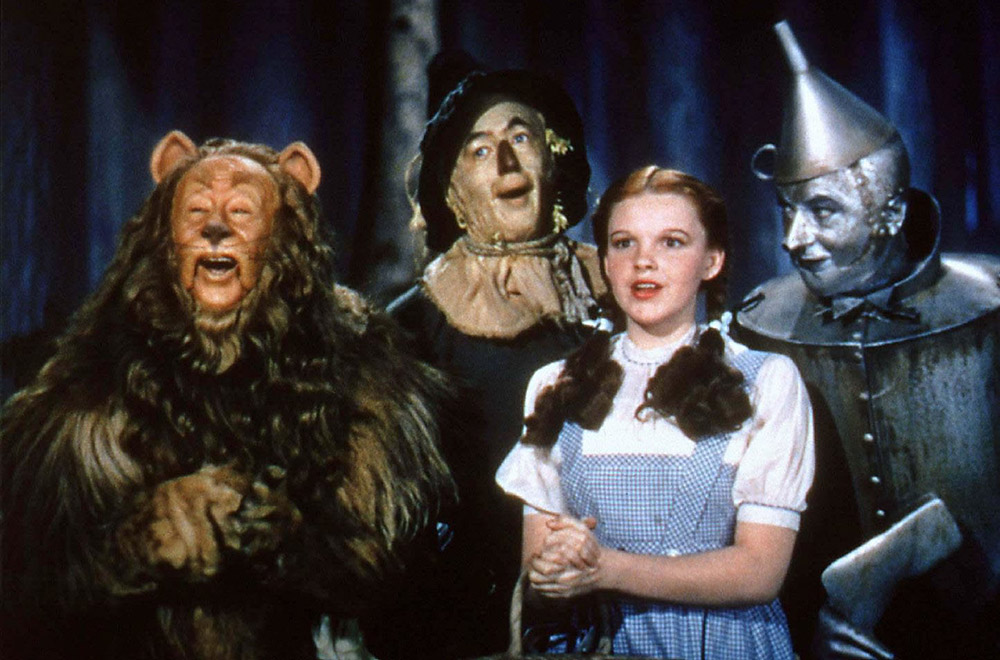
The cast of the 1939 movie ''The Wizard of Oz'' included (from left) Bert Lahr as the Cowardly Lion, Ray Bolger as Scarecrow, Judy Garland as Dorothy and Jack Haley as the Tin Man. (CNS/Warner Bros.)
She shows up in Oz, he notes, and immediately makes friends with three men who did not fit the standard images of masculinity. "She's attracted to the Scarecrow, who's an intellectual — I doubt he was very sexual," Waters quips, "the Tin Man, who's probably impotent — his joint was rusty — and the Lion, who was a sissy."
Garland's Dorothy was someone who believed that society's supposed oddballs were not only worthy of friendship, but also had the capacity to save the world by virtue of just being who they already were.
Over the course of the documentary, "It's Dorothy!" considers how Dorothy and Garland both spoke in important ways to other communities, too. Amber Ruffin, who rewrote the book for the 2024 Broadway revival of "The Wiz," saw it as an affirming and powerfully accurate characterization of Black women.
"Black women always save the day," she says. "It's not because we have to, it's because we can't help it. ... If you are a smart person in a community that is suffering, and you care, you're going to end up like Dorothy."
Queer Black essayist Roxane Gay notes how the journeys of Garland and Dorothy both confirm the realization "that the authority figures in your life don't have more answers than you do. They're just better at pretending that they do."
Near its end, "It's Dorothy!" considers the question of whether Garland's funeral did indeed lead to the Stonewall riots, which we celebrate this month as the event that energized the queer civil rights movements both in the United States and around the world.
While Betancourt argues that association is largely a myth, he also argues that it points to a greater truth: "What is fact is that losing Judy and Stonewall cleave the LGBTQ history in half: There is a before and there is an after," Betancourt opines. "Every new generation has found something in Judy that speaks to them. And we are in many ways the stewards of her legacy."

